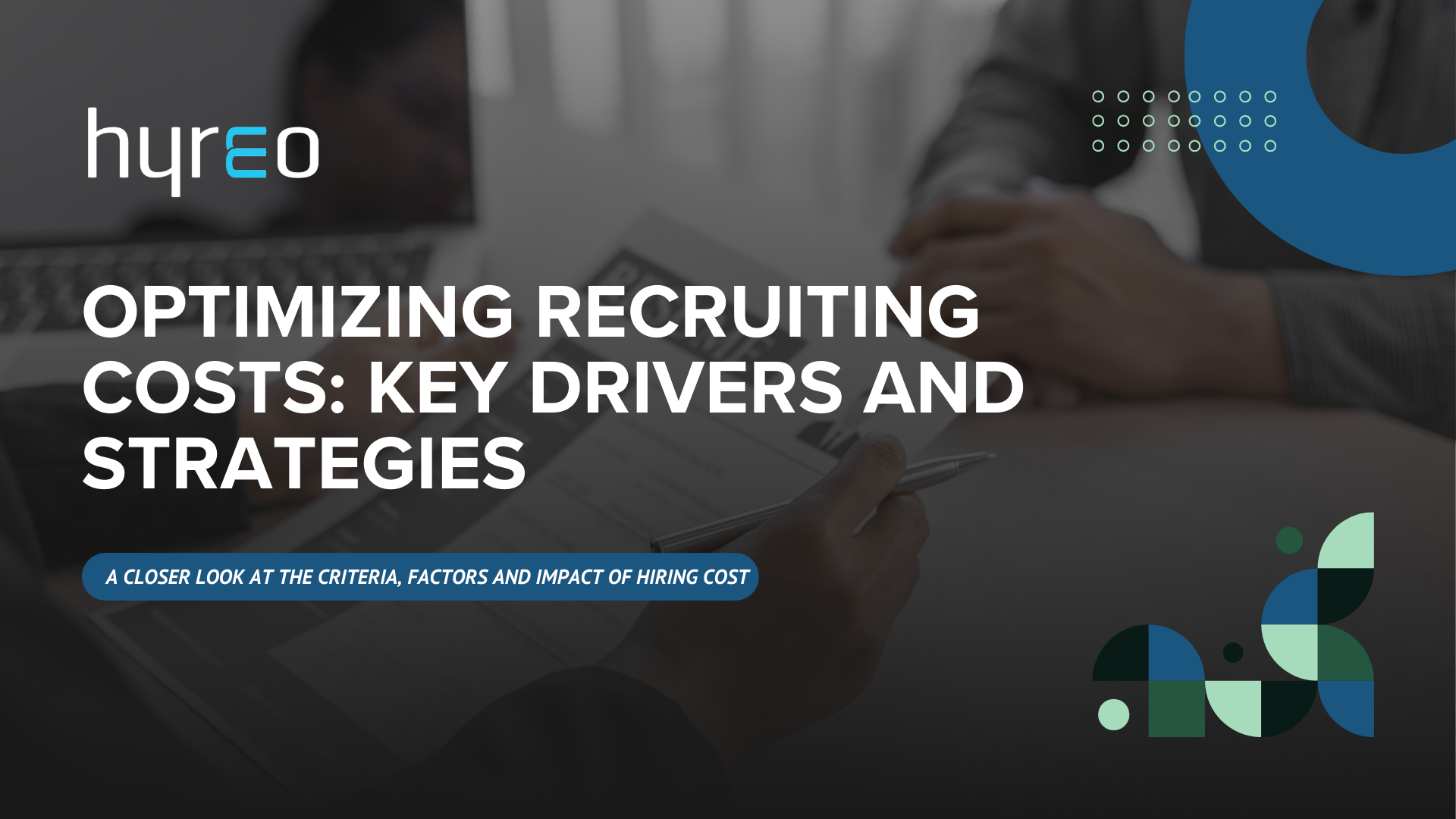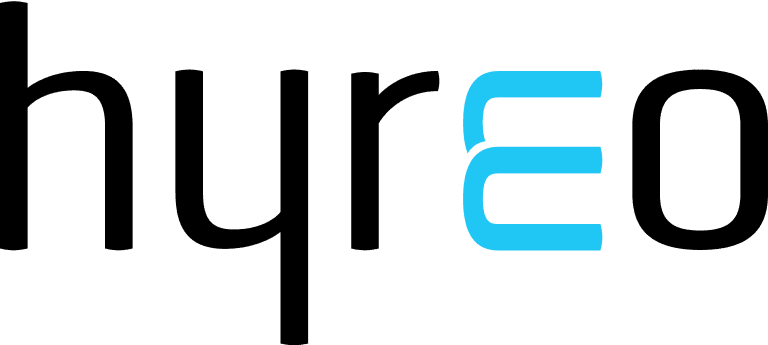Introduction
There’s a fine line between hiring and gambling. Without a proper plan, pouring money into recruitment can quickly turn into a costly risk—one where you could lose millions before figuring out what went wrong.
That’s why recruitment cost—what a company spends to hire a single employee—deserves serious attention. It’s not just a metric; it’s a cornerstone of smart budget planning. Understanding the ins and outs of cost-per-hire—how it’s calculated, the factors driving it, and its broader impact—is crucial for creating strategies that strike the perfect balance between cost, time, and quality of hire.
In the past, effective cost-per-hire management might have seemed like an impossible task. But today, with AI-powered recruitment tech and automation at our fingertips, the excuses are running out. It’s time to leverage advanced tools to optimize recruiting costs for success.
In this blog, we’ll discuss in detail:
- Cost-per-hire: Standard Calculation Formula
- Recruitment Cost factors
- Geo Comparison of Hiring Costs: USA vs India
- Recruitment Cost Analysis
- Strategies & Real-life Examples – Reducing Cost per hire
Cost of Hire: Definition and Standard Formula
In simple terms, Cost per Hire (CPH) is the total expense an organization incurs to hire a new employee. To elaborate, let’s refer to Glassdoor’s definition:
Cost per Hire is calculated as the sum of all internal and external recruitment costs, divided by the total number of hires made within a specific time period, where:
- Internal costs include: In-house recruiting staff, Full-time Internal Recruiters, Systems (eg: ATS) and Referral rewards
- External costs include: Job Sourcing, BGV, Work Eligibility, Drug Testing, Recruitment technology, Contractors, Pre-hire Assessments, Recruitment Process Outsourcing, Job Boards, and Marketing
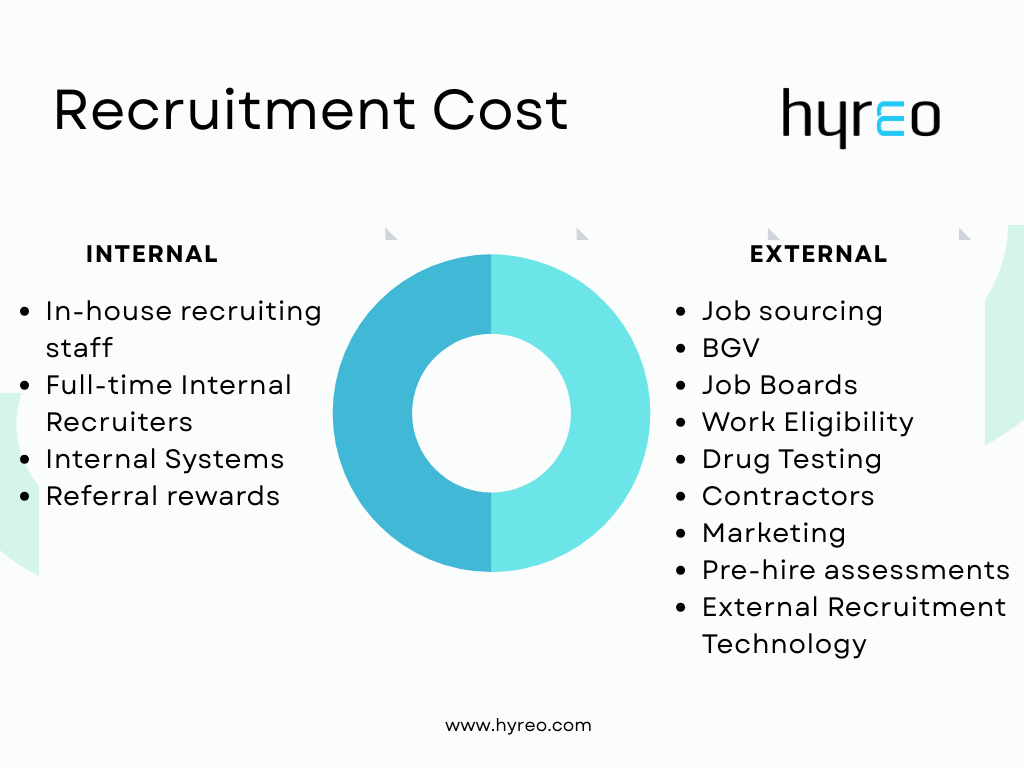
So, the Standard Cost per Hire formula goes like this:
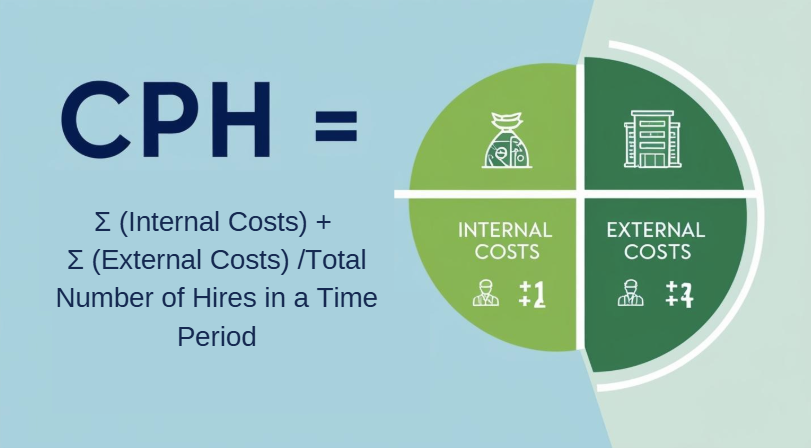
CPH = Σ (Internal Costs) + Σ (External Costs) /Total Number of Hires in a Time Period
Though the formula generally remains the same for most industries, the cost components: internal & external costs can vary.
For example, IT and Tech industries typically have high external costs since they rely on third-party agencies for talent sourcing or use specialized platforms for technical assessments. On the other hand, if you consider a biotech or healthcare industry, internal costs form a major chunk of the overall hiring costs as it involves complex onboarding process (regulatory compliance, licenses and certifications) and specialized HR team training.
Also, considering the complexity of industry practices and talent acquisition needs, industries like retail and manufacturing have lower CPH than IT, healthcare and biotech due to their bulk hiring methods.
Recruitment Cost Factors
1.Labor
Labor costs primarily cover salaries, commissions, and benefits for HR professionals, recruiters, and hiring managers involved in the recruitment process. If you’re relying on external agencies or consultants for hiring, those expenses fall under this category too. Labor costs can vary significantly, especially if your hiring needs are specialized or niche.
2.Recruitment Technology & Tools
Almost every company depends on technology or tools to streamline their recruitment activities. Common tools include Applicant Tracking Systems (ATS), resume screening software, and video interview platforms. Subscriptions to these tools, along with job board memberships and premium features on platforms like LinkedIn or Indeed, contribute to the total cost of recruitment technology.
3.Talent Marketing & Engagement
Talent marketing encompasses efforts like job advertisements, career fairs, employer branding, and social media campaigns aimed at attracting candidates. Additionally, organizations often incur technology cost for having Recruiting CRM tools, cover travel expenses for in-person interviews or provide welcome kits to new hires as part of their candidate engagement strategy.
4.Onboarding & Operational Costs
Onboarding costs involve expenses incurred when preparing a new hire, such as orientation programs, training sessions, background verification (BGV), and medical or drug tests. Operational costs, on the other hand, include the day-to-day expenses of running recruitment activities, such as office space, utilities, and legal fees.
5.Opportunity and Retention costs
Leaving key positions vacant for too long can lead to significant opportunity costs—like project delays or other teams having to work overtime to cover gaps. Retention costs, on the other hand, refer to investments in initiatives like referral bonuses, engagement programs, or technology to retain existing employees and boost their satisfaction.
Geo Comparison of Hiring Costs: India Vs USA
When comparing hiring costs between two geographies, several factors come into play—industry, role specialization, demographics, and market dynamics. While some countries focus on high-value roles, others are evolving into strategic talent hubs for global companies, offering scalability and cost-efficiency.
As for the U.S.—it remains a powerhouse for innovation-driven hiring, attracting top-tier talent, backed by a strong market infrastructure. With a focus on leadership positions and advancements in AI and automation, the country continues to sustain long-term talent growth.
At the same time, countries like India, Eastern Europe, S Asia and China have become key destinations for global companies expanding operations through cost-effective, large-scale hiring models while delivering high-value services. India has recently emerged as the top talent market for global employers. According to The New Indian Express (TNIE), the United States, UAE, and the UK are among the top countries actively scouting talent in India.
Below is a comparative analysis of hiring costs between the U.S. and India, highlighting key differences and trends.
India | U.S. |
|
|
Recruitment Cost Analysis
Given the average cost per hire remains approximately between $4000 – $4700 in the U.S. in 2025. LinkedIn & PRNewswire, there could be variations across industries and job levels and with the mix of external and internal spend. Eg: For high-demand roles, the cost can exceed $10,000.
As with external agency or consultants, , expect to pay 20-25% of the new hire’s first-year salary as fees. And this fee can also range from 15% to 40% or more, depending on the role or the firm recruiter works with (Indeed).
Let’s break down the cost structure of hiring a tech professional with an annual salary of $80,000 – $120,000, and make a comparison of internal v/s with external agency support.
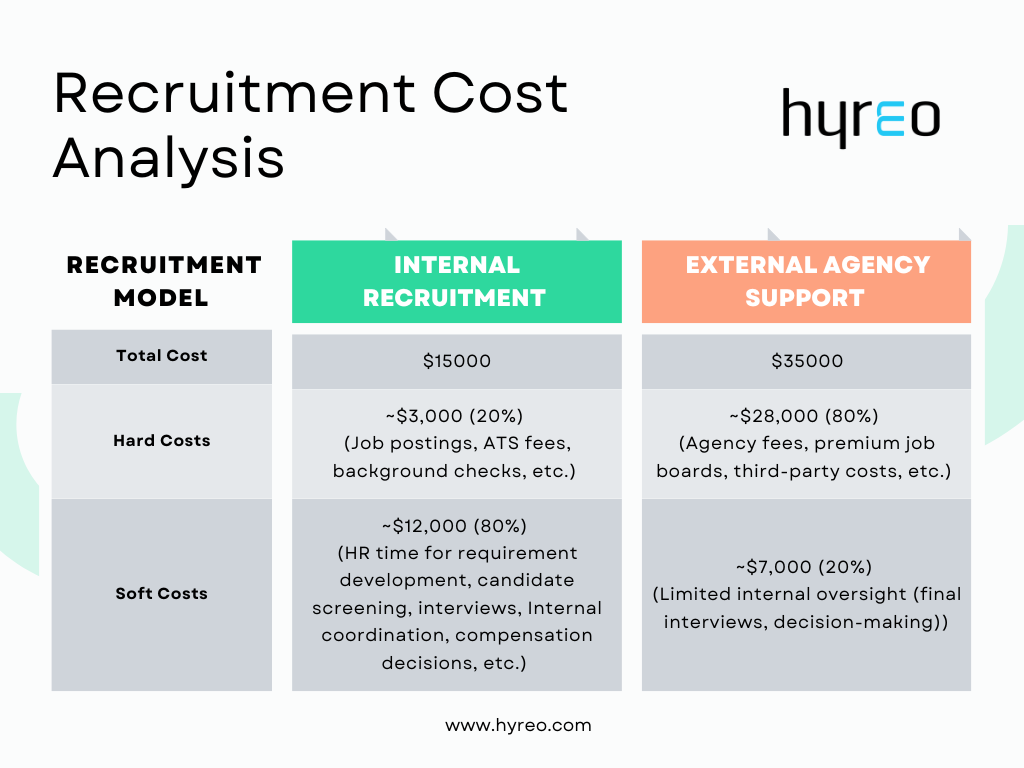
Hard costs are the direct, tangible expenses, while soft costs are the indirect ones that impact business productivity. Understanding how your hiring cost is split between these two can help you make smarter decisions, optimize spending, and improve overall efficiency. After all, knowing where your money goes is the first step to making every dollar count!
Here’s a visual breakdown of the cost distribution for Internal Recruitment vs. External Agency Support, highlighting the significant cost differences.
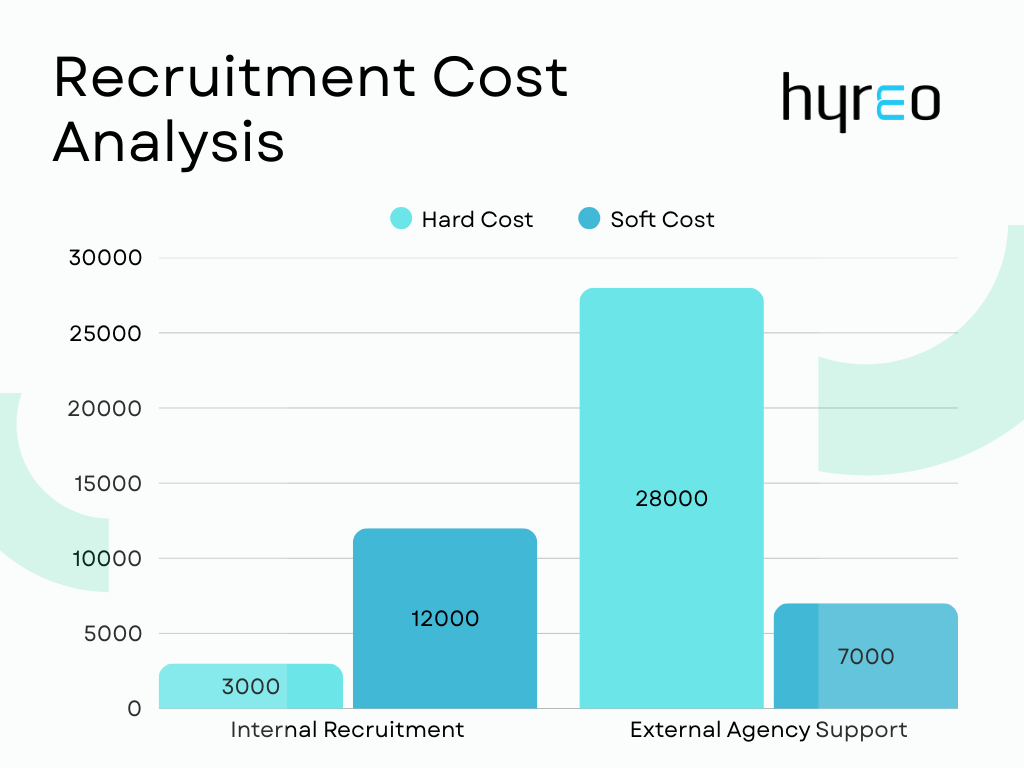
As you can see, hiring through an external agency costs about 2.3 times more than internal recruitment. However, even with internal recruitment, there’s a catch—HR time spent on recruiting activities constitute 80% of internal recruitment costs. Let’s also analyze the internal recruitment cost from the perspective of both Hard and Soft cost.
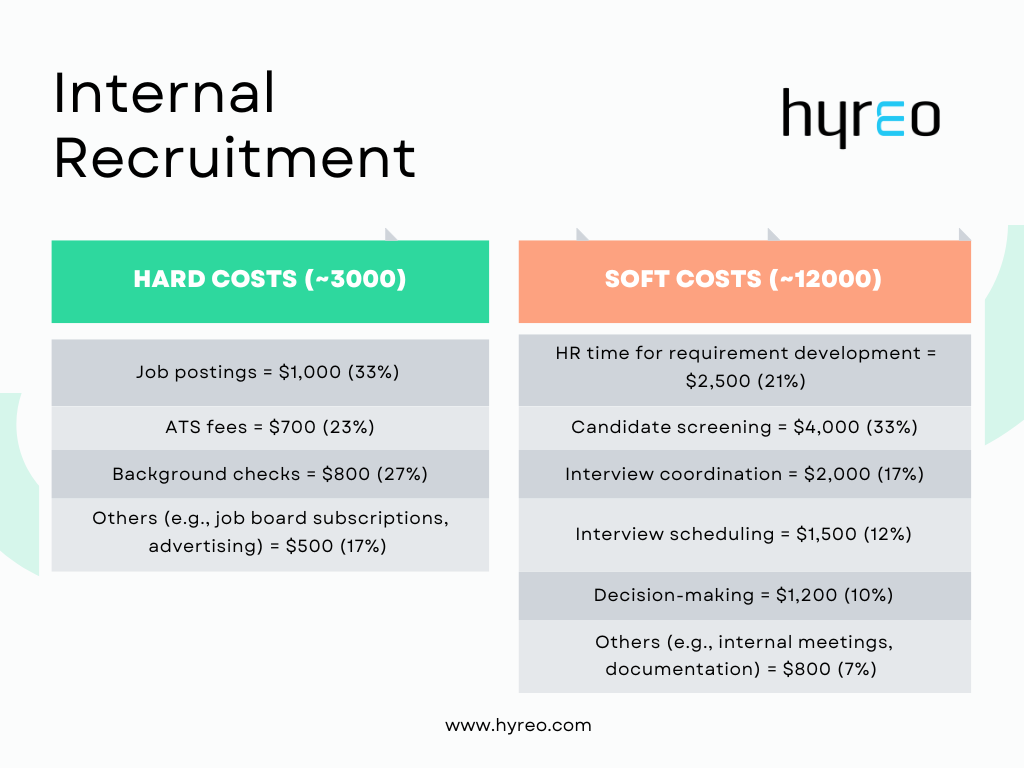
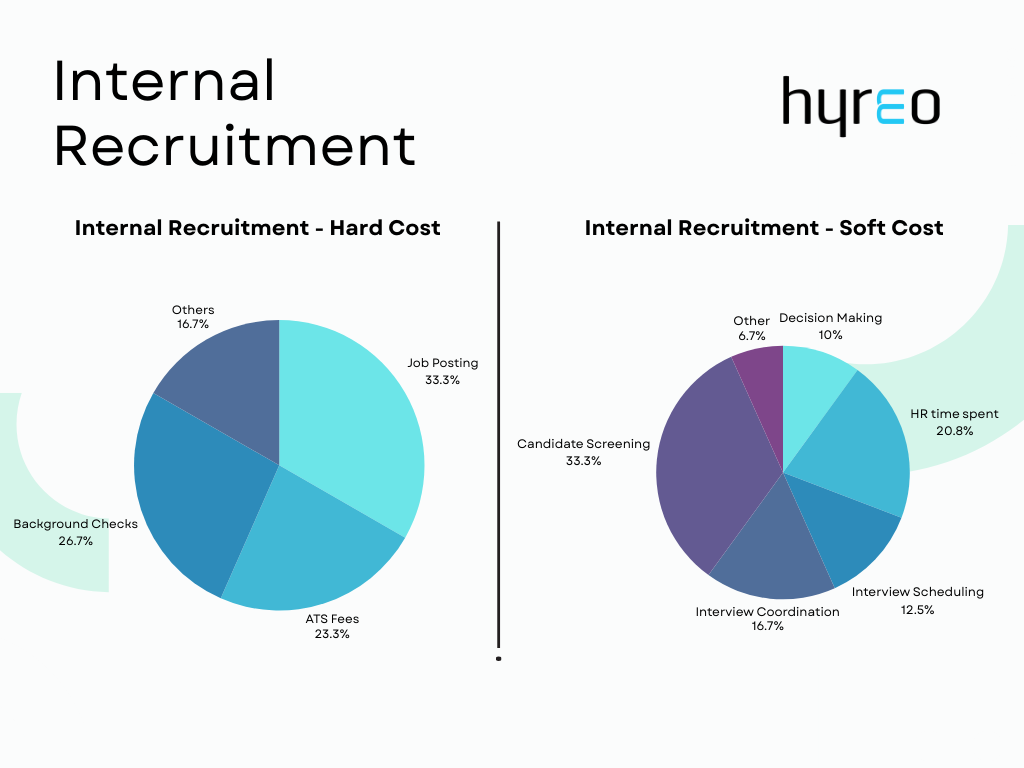
A big chunk of soft costs in internal recruitment comes from human effort—things like candidate screening (33.3%), HR time spent (20.8%), interview coordination (16.7%), and scheduling (12.5%). These tasks take up a lot of manual work. Implementing tech solutions like automation and AI can handle a lot of the heavy lifting, while non-tech strategies—like better workflows and smart delegation—can make the process smoother. Cutting down on these inefficiencies means saving time, reducing costs, and making hiring way more efficient.
Reducing Cost per hire: Strategies & Real-life Examples
Hiring the right talent is important, but doing it without breaking the bank? That’s what makes a truly successful hire. The good news is that with smart strategies, AI-powered tools, and data-driven decision-making, companies can cut hiring costs (both hard and soft costs) without sacrificing quality. From automating screenings to boosting employer branding, there are plenty of ways to make both internal recruitment and recruiting via external agencies more efficient and budget-friendly. Let’s explore some practical strategies and real-world examples of how businesses are keeping hiring costs in check.
1.Reduce Cost of Labor with Tech Adoption
Cost per hire and time to hire are sides of the same coin. Your recruitment cost is directly tied to how long it takes to fill a role, and the resources used during that time. With tech taking the lead, cutting down time-to-hire and cost-per-hire is all about finding the right AI-led platforms, modern ATS models, or even better, AI Agents that automate tasks like screening, shortlisting, scheduling and even interviewing with minimal recruiter effort. Tech adoption can slash hard and soft costs by 20-35% for both internal hiring and external Agency support. In fact, according to Deloitte and McKinsey, AI can nearly halve time-to-hire.
Model | Hard costs | Soft costs | Total |
Internal-30% reduction | $2100 | $8400 | $10500 |
External-25% reduction | $21000 | $5250 | $26250 |
Example: Unilever saved hundreds of thousands of pounds and 100,000 hours of human recruitment time last year by deploying an AI system for video interviews. This significantly reduced soft costs like recruiter effort and time spent on evaluations, while also reducing hard costs associated with lengthy hiring cycles.
Also read: Best 11 Video Interviewing Platforms to choose from
2.Low-cost Shared Services Model for additional savings
Recruitment is one of the most resource-heavy HR functions, but a low-cost shared services model (hybrid approach) can be a game-changer. By centralizing 50% of internal recruitment tasks—like candidate screening, scheduling, and admin follow-ups—companies can cut costs per hire by 40-45%. In an external agency hybrid model, shared services can take on half the tasks usually outsourced (like initial sourcing or screening), reducing agency fees while keeping hiring efficient and cost-effective.
Model | Hard costs | Soft costs | Total |
Internal-44% reduction | $1,680 | $6,720 | $8,400 |
External-41% reduction | $16,520 | $4,130 | $20,650 |
Example: USG Corporation, North America’s top manufacturer of building materials, with operations in 30 countries, switched to a shared services model for HR, using a centralized ATS. This move helped them cut down on soft recruitment costs—adopting 75% more technology and streamlining processes by 90%.
Also read: Recruiting AI Agents: Your New Hiring Ally
3.Tech-enabled Shared Service Model for ultimate cost reduction
In today’s AI world, most shared services are AI and technology-enabled which can be the case of recruiting shared services as well. Multiple aspects of operations can be managed by AI agents, custom deployed for each use-case and customized for each business, further creating a case for significant cost arbitrage and ROI in recruiting operations.
Example: With our AI/tech-enabled shared services model, Hyreo has helped clients cut both soft and hard costs by 70-75%. By automating repetitive tasks with smart AI agents and centralizing operations under a shared model, Hyreo has made hiring more efficient and cost-effective for those involved.
Model | Hard costs | Soft costs | Total |
Internal-73% reduction | $810 | $3,240 | $4,050 |
External-70% reduction | $8,400 | $2,100 | $10,500 |
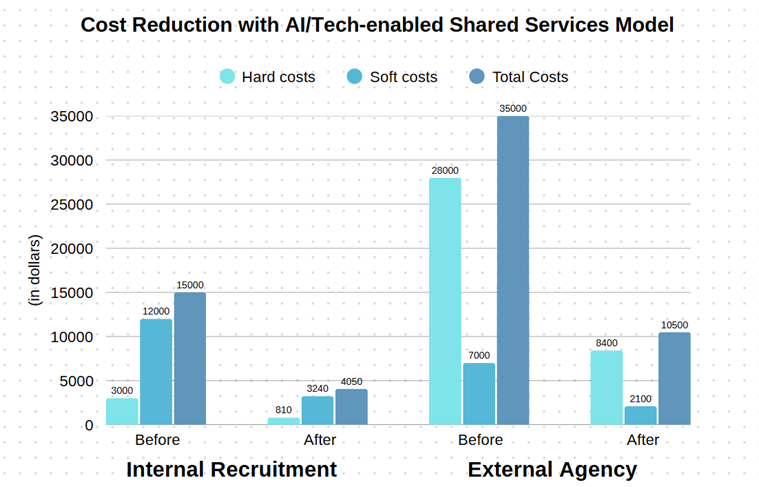
The following graph breaks down how tech adoption, shared services, and AI/Tech-enabled shared services help cut costs compared to the baseline for both internal recruitment and external agency hiring. It gives a clear picture of the savings across different hiring approaches.
Strategy | Model | Hard costs | Soft costs | Total costs |
Tech Adoption | Internal-30% reduction | $2100 | $8400 | $10500 |
External-25% reduction | $21000 | $5250 | $26250 | |
Shared Services Model | Internal-44% reduction | $1,680 | $6,720 | $8,400 |
External-41% reduction | $16,520 | $4,130 | $20,650 | |
AI/Tech-enabled Shared Services | Internal-73% reduction | $810 | $3,240 | $4,050 |
External-70% reduction | $8,400 | $2,100 | $10,500 |
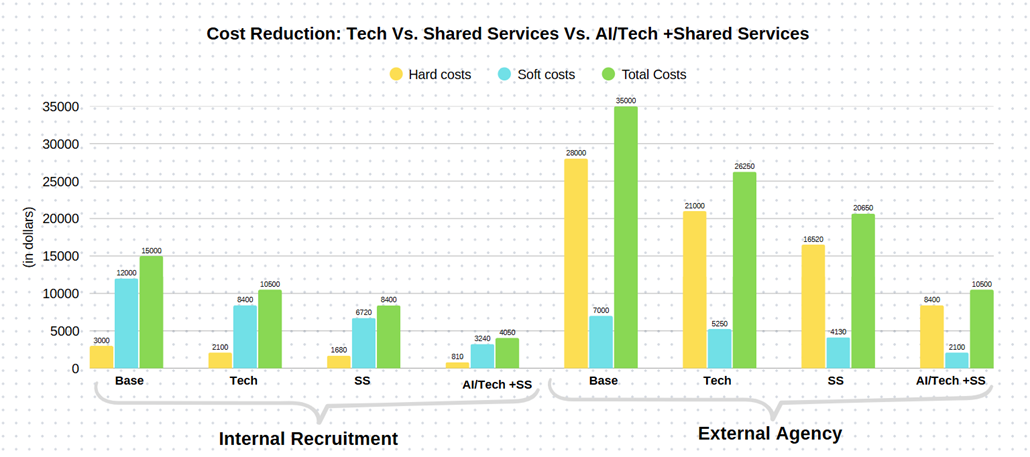
Also read: Top 10 AI recruiting tools for 2025
4.Candidate Engagement & Employer Branding
Most companies see an 80% candidate drop-off rate during the application process. This means they’re losing money not just when a candidate declines but also when they have to go through the whole hiring process again. And it’s even worse when candidates drop out after the offer has been made! A lot of this comes down to poor candidate engagement and weak employer branding, which make candidates lose interest, sometimes even right before their start date. By using AI technologies like chatbots or voice bots to keep candidates engaged with consistent, meaningful conversations, companies can improve both their engagement and branding. This helps cut down on overall recruiting costs, especially that come from those frustrating drop-offs.
Example: A leading IT giant implemented Hyreo’s POFU Candidate Engagement Solution, achieving a financial impact of $11M by significantly reducing candidate decline rates (and soft recruitment costs for recruiter effort) through advanced AI chatbot-driven engagement and branding efforts.
“AI agents are ushering in a new era of recruitment, making engagement more dynamic and brand storytelling more powerful. With Hyreo’s chat and voice agents, candidates get seamless, meaningful interactions and real-time support, driving 10X better engagement and lasting loyalty.” — says, Arun Satyan, Founder at Hyreo, a leading AI technology company providing recruiting solutions.
Also read: Top 5 Use Cases of AI Agents in Recruitment for 2025
5.Quit Legacy HCM systems and Embrace New-age technology
One of the major triggers for high recruitment costs could be the traditional legacy HCM systems that fail to keep up with your evolving hiring needs. Forget winning—you won’t even be in the game if you’re still relying on outdated systems to run your recruitment process. Take Salesforce, the world’s largest enterprise software provider, for example. Last year, its stock tumbled by 21.6%, largely because it struggled to keep pace with the rapidly changing market environment, likely influenced by AI advancements. While hesitation toward tech adoption is understandable, embracing AI-powered solutions can significantly cut recruitment costs and enhance efficiency compared to legacy systems. Change is good, and the numbers back it up—24% of companies already use AI to recruit top talent, 67% agree it has a positive impact on recruitment and 85% believe AI will take over hiring process soon. Quitting legacy systems can result in significant hard cost savings (e.g., lower ATS fees, more accurate sourcing).
Example: A top European bank teamed up with Hyreo to cut down recruitment costs and make talent engagement smoother. With Hyreo’s enterprise post-offer solution seamlessly integrating into their existing HCM system, they automated HR operations with no workflow disruptions in between and slashed FTE effort by 2.5x—leading to major cost savings in hiring!
Also read: Effective Post-Offer Engagement to Reduce Candidate Drop-offs
Conclusion
The first step in ensuring you don’t waste money on recruitment is to thoroughly understand how costs are distributed across various criteria and the factors that can influence them. It’s also important to recognize that these factors are constantly evolving/changing. The total cost-per-hire estimate can fluctuate depending on the complexity and challenges of tech hiring, as well as seasonal hiring spikes and shifting market dynamics. One thing remains certain: AI-driven technology can help keep your recruitment budget in check if you’re looking for a long-term solution. The key takeaway? Simply pinching pennies won’t cut it. The real strategy lies in understanding the underlying factors and making smart investments to keep recruitment expenses within reasonable boundaries.
In the coming years, it’ll be rare to find organizations that haven’t integrated AI into their recruitment framework. According to SHRM, between 35% and 45% of companies have now adopted AI in their hiring processes, with the AI recruitment sector projected to expand at a 6.17% compound annual growth rate from 2023 to 2030.
With advanced AI versions like Autonomous AI Agents—which can independently perform tasks and make decisions without human intervention—on the rise, the benefits for recruiters and employers will only grow. Expect even greater reductions in hiring costs, improved efficiency, and enhanced candidate engagement.
Also read: 10 Best Strategies to Reduce Recruitment Costs
FAQs
- How does AI impact the cost of recruitment?
AI helps reduce recruitment costs by automating time-consuming tasks like resume screening, candidate sourcing, and scheduling, allowing recruiters to focus on high-value activities. This can result in up to a 50% reduction in recruitment costs and time-to-hire.
- How does AI improve the candidate experience in recruitment?
AI enhances candidate experience by providing quicker responses, personalized communication, and a more transparent hiring process. Candidates can receive timely updates and feedback, creating a smoother journey from application to hire.
- What industries benefit most from AI in recruitment?
Industries with high-demand roles or high volume hiring, like IT, tech, healthcare, retail or BFSI benefit from AI in recruitment. AI helps them efficiently manage large volumes of applicants, reduce hiring time, and improve candidate quality, leading to cost savings and better hires.

